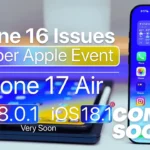Troubleshooting Connectivity Issues in Windows
Connectivity issues can disrupt your ability to access the internet, network resources, or other devices. These problems can arise from various factors, such as network configuration, wireless signal interference, driver issues, or hardware malfunctions. In this article, we will provide troubleshooting steps to help you address and resolve common connectivity issues in Windows.
1. Check Network Connections:
– Ensure that all cables (Ethernet, USB, etc.) are securely connected to their respective ports.
– If you are using a wireless connection, verify that Wi-Fi is turned on, and you are within range of the network.
2. Restart Your Devices:
– Power cycle your network devices, including the modem, router, and computer.
– Turn off each device, wait for a few seconds, and then turn them back on in the following order: modem, router, and computer.
3. Verify Network Settings:
– Open the Network and Sharing Center by right-clicking on the network icon in the system tray and selecting “Open Network & Internet settings.”
– Click on “Change adapter options” to access the Network Connections window.
– Right-click on your active network connection and select “Properties.”
– Ensure that the necessary protocols and services, such as TCP/IP or IPv6, are enabled.
– If you are using a static IP address, double-check that the settings are configured correctly.
4. Update Network Drivers:
– Outdated or faulty network drivers can cause connectivity issues.
– Open the Device Manager by pressing Windows key + X and selecting “Device Manager.”
– Expand the “Network adapters” category and locate your network adapter.
– Right-click on the adapter and choose “Update driver.”
– Select the option to automatically search for updated driver software or manually install the latest driver from the manufacturer’s website.
5. Reset TCP/IP Stack:
– Open the Command Prompt as an administrator by right-clicking on the Start button and selecting “Command Prompt (Admin).”
– Type the following commands one by one, pressing Enter after each:
“`
netsh winsock reset
netsh int ip reset
ipconfig /release
ipconfig /renew
“`
– Restart your computer and check if the connectivity issues have been resolved.
6. Disable Security Software Temporarily:
– Firewall or antivirus software may sometimes block network connections.
– Temporarily disable the firewall or antivirus program on your computer and check if the connectivity problem persists.
– If disabling the security software resolves the issue, adjust its settings to allow the necessary network connections or consider using an alternative security solution.
7. Perform Network Troubleshooter:
– Open the Settings app by pressing Windows key + I and navigate to “Network & Internet.”
– Select “Status” and click on the “Network troubleshooter” link.
– Follow the on-screen instructions to run the troubleshooter, which will attempt to identify and fix common connectivity problems.
Conclusion:
By following these troubleshooting steps, you can effectively diagnose and resolve connectivity issues in Windows. However, if the problem persists or you encounter more complex network-related challenges, it may be beneficial to seek assistance from your network administrator, internet service provider (ISP), or consult a technical expert. Remember to provide detailed information about the issue and the steps you have already taken to help facilitate the troubleshooting process.
.png)






